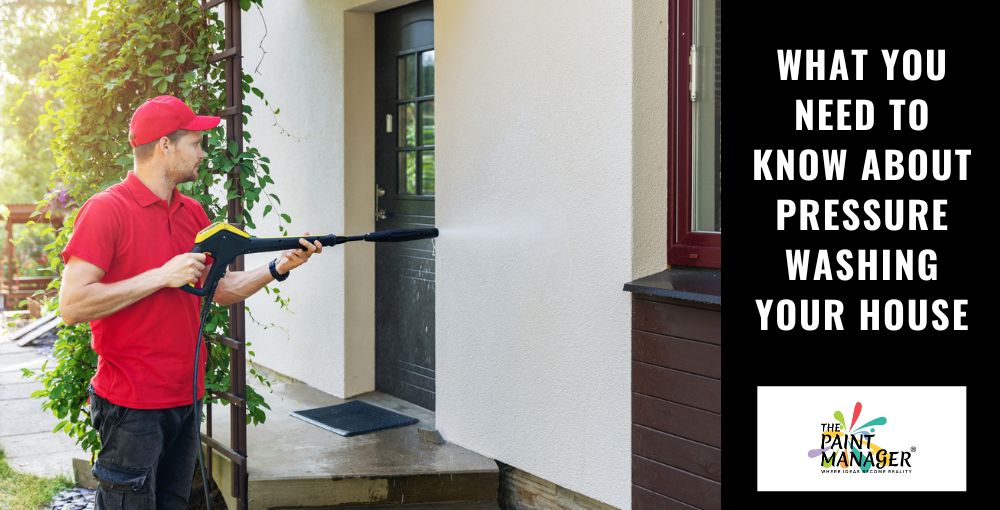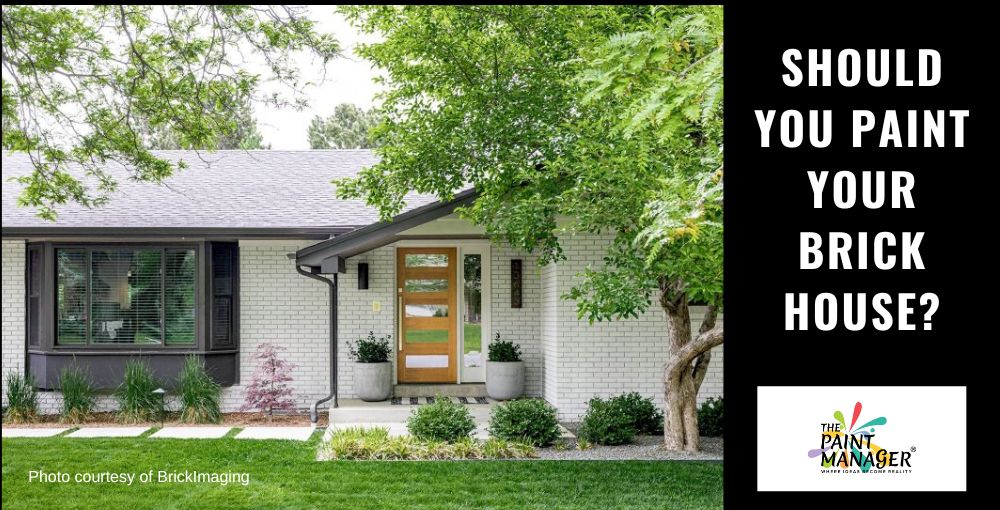
What You Need To Know About Pressure Washing Your House
In Central Florida, pressure washing the exterior of your house is part of practicing good regular maintenance. Our humid subtropical climate promotes the growth of mildew, mold and algae – and “pollen season” in spring covers every stationary exterior surface with a thick coat of the stuff. Add to that the build-up of regular dirt and grime, which means the typical house should have a thorough cleaning on a regular basis.
Ignoring these conditions not only results in a dingy appearance, but can actually damage your home and pose a health hazard. As noted by New Life Painting, mildew and mold continue to grow if left unchecked – and mold can grow within walls, meaning your home’s interior could be affected. Our blog post – “Is Your Home’s Exterior Covered In Mildew?” – covers this topic in greater detail.
Moreover, pressure washing is definitely required before you paint it, or to improve its curb appeal if you’re planning to sell.
Whether you’re a new (or relatively new) Florida resident – or a new homeowner just learning about taking care of your property – we at The Paint Manager offer this informal introductory course about pressure washing. But don’t worry – there’s no test at the end!
When Should You Pressure Wash Your House?
Mid-spring and early fall are the best times of year to perform this task. March and April are the peak of pollen season, while October marks the downside of hurricane season (June 1 through November 30). By the way, if you’re planning to paint your house, these are the best windows of opportunity for this job, as well. Our blog post – “When Is The Best Time Of Year To Have My House Painted?” – covers this topic in greater detail.
However, if you notice mildew and algae growth, don’t wait, regardless of the season! Likewise if you’re putting your house on the market. Having it look its best for prospective buyers takes priority over timing the pressure cleaning so that the exterior stays clean for as long as possible.
Thinking About Doing it Yourself? Here’s What’s Involved!
If you’re young (or youngish), strong and sturdy – and want to save a few bucks – you might think that you can take the DIY route. We invite you to read the following instructions presented by The Home Depot, then decide!
Choose a pressure washer – Whether you buy or rent a pressure washer, make sure it’s appropriate for the job. Depending on the exterior of your house, you may need to use a certain type of pressure washer to match the housing materials to the right water pressure levels.
- Vinyl siding can withstand a powerful gas pressure washer (2,500-3,000 psi).
- Aluminum, stucco or soft-grain wood homes will do better with a less powerful washer (about 1,200-1,500 psi).
- Decide if you need any accessories such as pressure washer extension wands or pressure washer telescoping wands, which are helpful when cleaning two-story homes or hard-to-reach areas.
Prepare the area and put on safety gear:
- Before you begin, remove or cover such items as light fixtures and air conditioner compressors to protect them from damage.
- Use a tarp or plastic covering over shrubs and garden plants. Secure the tarps in place with duct tape. Note the location of windows and electrical outlets to ensure you avoid them while pressure washing.
- Do not stand on a ladder when using a pressure washer. The pressure could cause you to lose your balance.
- Never drive water directly into gaps or cracks in your home’s exterior. Patch cracks and holes in mortar and brick.
- Keep your pressure washer wand at least 6 feet away from electrical wires and never spray water into outlets. Cover electrical sockets with duct tape or close the covers prior to washing.
- Pre-scrub the exterior with a scrub brush or spray with a garden hose to remove any dirt, debris or mildew.
- Never point a pressure washer at other people or pets.
- Be sure to wear the proper protective gear – such as safety goggles and work gloves.
Set up the pressure washer:
- Using a 5-gallon water bucket, mix water and a cleaning detergent with mildewcide according to manufacturer’s recommendations.
- Attach your pressure washer to your garden hose. Choose the pressure washer nozzle you plan to use and attach it to your sprayer.
- Step back about 3 feet from your home and test the pressure washer against the house. Adjust your stance and spray until you feel the pressure is strong enough to remove dirt or mildew without damaging the home’s exterior.
Clean from the bottom up:
- Using the cleaning solution, start power washing at the bottom of the house and work your way up. Working from the top down can cause water and suds to run down the side of the house, making it more likely you’ll miss a section.
- Spray in a horizontal, side-to-side motion.
- When spraying roof overhangs and gutters, always maintain a 45-degree angle.
Finish up and let dry:
- Turn off the pressure washer and disconnect it from the garden hose.
- Consult the owner’s manual for the proper steps for storing the pressure washer, such as draining liquid from the pump when finished.
- Use just the garden hose to rinse the soap from your home with plain water.
- Remove all tarps, drop cloths and duct tape.
- If you plan to paint, allow the home’s exterior to completely dry. This typically takes about two days.
Having Second Thoughts About Doing it Yourself?
Even if you’re physically up to handling the job, there are clearly several factors to consider. First, are you really saving money by doing it yourself? As you’ve learned, there’s the expense of buying – or even renting – a pressure washer. Add to that the cost of protective gear, accessories, detergent, tarps, etc.
Being able to wield the pressure washer wand and aim the nozzle skillfully and safely is another factor. Dangers include using too much pressure or the wrong nozzle – which can damage surfaces (such as siding, mortar and wood), break windows and even cause injury. Improper use can also blast paint off, which means you’ll be repainting long before you intended.
Also, what’s your time worth? Are you willing to take a weekend to pressure wash your house? It’s grueling work, even under ideal circumstances. Remember that once you’re finished, you’ll have to disassemble the pressure washer, return it to the rental place (if applicable), clean up, remove tarp, etc. Our blog post – “Why You (or a Pro) Should Pressure Wash Your House” – covers this topic in greater detail.
The Advantages of Hiring a Professional to do the Job
A pressure washing pro has the skills and experience to handle every type of exterior cleaning job with the right equipment and cleaning solutions for the home’s construction material and paint. A professional knows how to prep the area and protect nearby plants. A professional has the expertise to clean specific areas without causing damage, and comes to your house with the proper protective clothing and gear. The task will be done quickly yet thoroughly, saving you valuable time and labor.
And speaking of saving, it might not cost as much as you may think! The Paint Manager provides our customers with the most professional and affordable pressure washing services available. Our services include hot and cold water pressure washing, steam cleaning, pressure cleaning (or power washing) of home exteriors, decks, driveways, sidewalks, curbs, townhomes, condos, commercial buildings – and more!
We have been proudly serving Central Florida for more than 20 years with experienced, dedicated and professional services that include full-service commercial painting, exterior and interior house painting, roof repair and cleaning, drywall repair, popcorn ceiling texture removal and cabinet refinishing – just to mention a few!
Plus, become a member of The Paint Manager to receive a 15% year-‘round member’s discount. Contact us to learn more about our services and membership discount offer. We look forward to meeting you!









